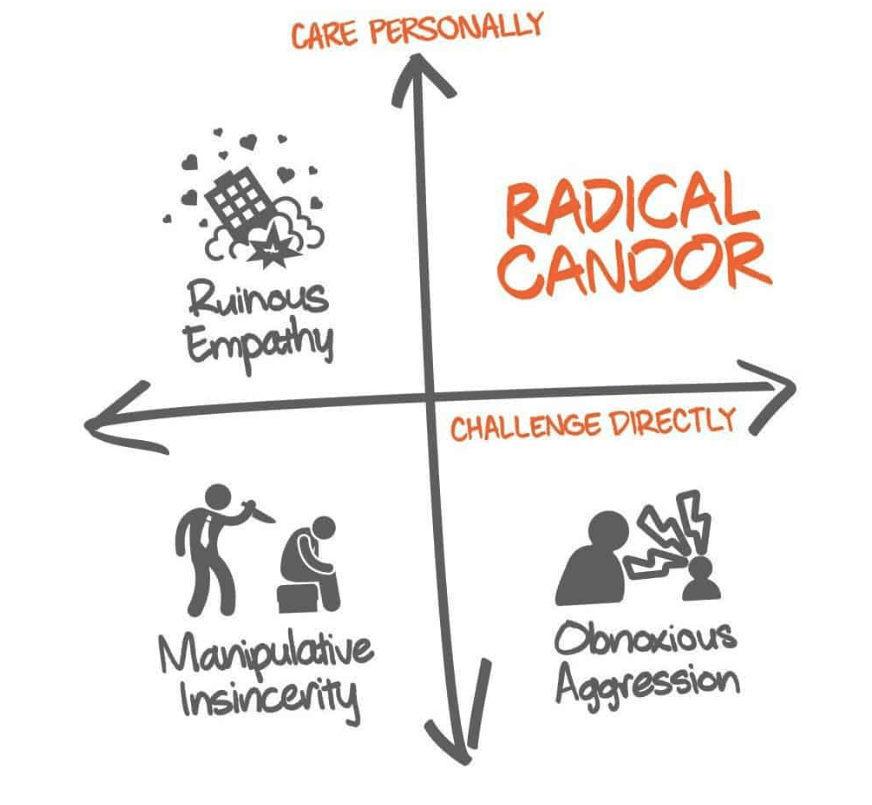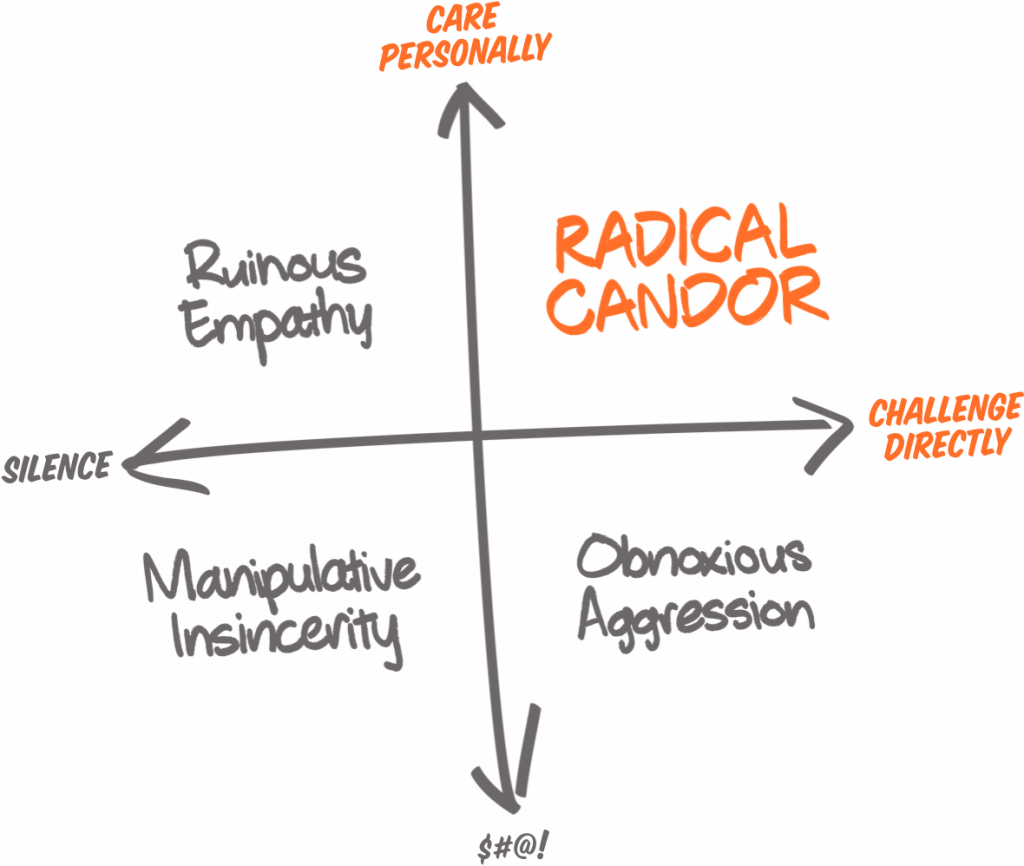Kim Scott is the author of Radical Candor: Be a Kick-Ass Boss Without Losing Your Humanity and Radical…
3 Ways to Introduce Radical Candor’s Feedback Framework to Your Organization
When we talk about Radical Candor at companies or with individuals, we see a lot of heads nodding in agreement. People understand that Radical Candor’s feedback framework can improve performance, reduce politics and make work more fun. But how do you make sure that these ideas that resonate in the moment actually get implemented, rather than forgotten? Here’s a question from one of our readers:
As a CEO who hasn’t been practicing Radical Candor, is it advisable to transition into the practice immediately or slowly introduce it into the company’s culture?
My advice is to start right away but understand that it will take continuous practice to make a lasting change. Here are some steps you can take to ensure a successful transition.
Get our free guide for rolling out Radical Candor on your team >>
Create a Shared Vocabulary
Start by explaining the idea of Radical Candor and the 2×2 to your company in your own words. It is important to establish a shared vocabulary so that everyone can understand the goal and feel comfortable changing their behavior.
Lead by Example
Tell your company that you think you have not been Radically Candid enough, and that you’re going to try to make a big change. By communicating that you want to improve, you’ll show your team that you’re serious about the cultural shift. Prove that you mean it by asking for their help. Ask them to rate your feedback — to tell you when they feel you are veering into one of the other three quadrants. Remind them, these are not labels for people, they are labels for behavior.
By building a collaborative process, you’ll improve your own impromptu feedback quicker, and you’ll help your team see first-hand the impact of Radical Candor. When they see the improvements, they’ll also be encouraged to make the change themselves.
Commit to the Journey
You won’t become Radically Candid overnight, and it’s almost impossible to be Radically Candid 100% of the time. My experience with changing behavior is that I generally have to overshoot. In other words, if I’m convinced that my behavior is consistently Ruinously Empathetic, I’m probably going to have to feel like I’m being a real jerk before I get to Radical Candor. That is really uncomfortable. But if you’ve communicated to your team why you’re changing and asked them to rate your feedback, they’ll understand and help you improve.
The important thing is that you explain to your organization that you are going to start saying what you think a lot more clearly, and that you’re not doing it to be a jerk, or to hurt anyone’s feelings, you are doing it because you care about each person you work with personally, and you want to help them do the best work of their careers. And then walk the walk on that.
In short, go all-in yourself and continually involve your team. And remember that Radical Candor is HIP (Humble, Helpful, Immediate, In person, Private criticism/Public praise, not Personalized).
I was asked a similar question at Betterworks Goal Summit 2016. Here’s my response:
Please let me know what you think of this advice in the comments below. I’m sure I got some stuff wrong and would love any guidance readers have to offer!
Do you have a question or tricky management situation? Ask us for advice!
————————————————————————————————————————————————————————————–
Need help practicing Radical Candor? Then you need The Feedback Loop (think Groundhog Day meets The Office), a 5-episode workplace comedy series starring David Alan Grier that brings to life Radical Candor’s simple framework for navigating candid conversations.
You’ll get an hour of hilarious content about a team whose feedback fails are costing them business; improv-inspired exercises to teach everyone the skills they need to work better together, and after-episode action plans you can put into practice immediately to up your helpful feedback EQ.
We’re offering Radical Candor readers 10% off the self-paced e-course. Follow this link and enter the promo code FEEDBACK at checkout.




